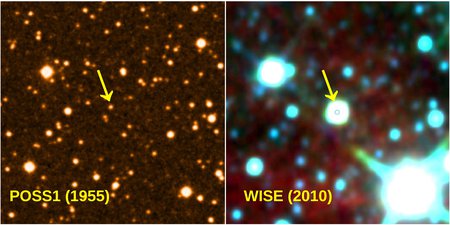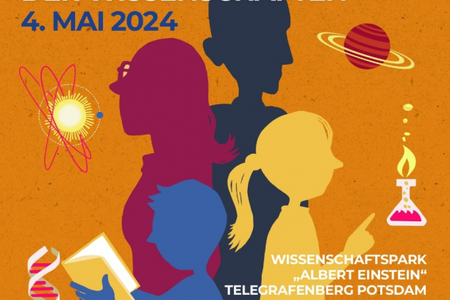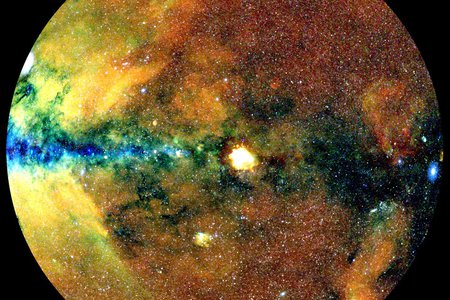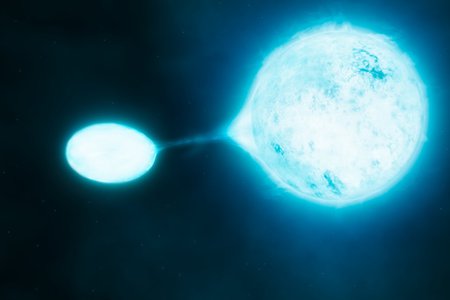Starry Night on October 19
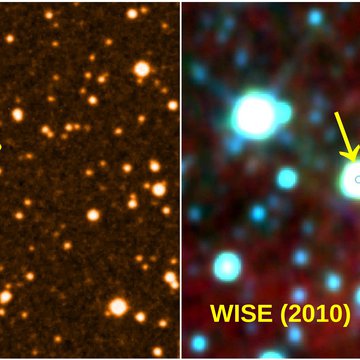
This red dwarf star (“Scholz's Star”) passed by the Sun 70,000 years ago in a distance of 10 light months. AIP researcher Ralf-Dieter Scholz discovered it in 2014.
Credit: AIP, SuperCOSMOS Sky Surveys, WISEThe Leibniz Institute for Astrophysics Potsdam (AIP) invites to the next Starry Night in Babelsberg on Thursday, October 19, starting at 7:15 pm with a public lecture of Dr. Ralf-Dieter Scholz about our "Cool neighboring stars". Please note that the lecture will be given in German.
Even though the stars in the sky seem to be standing still, they are moving rapidly through space. This applies to our home star, the Sun, as well. However, the fast movement of stars is not visible to the naked eye, because even the nearest celestial bodies are far away from us. They do not crash into each other, not even if their paths cross or if a star that is drifting by is passing our solar system. Surprisingly, we are not even close to knowing all our neighboring stars, as Ralf-Dieter Scholz will explain in his talk. The closest star, Proxima Centauri, has only been discovered about a hundred years ago. The search for further hidden red dwarf stars and the brown dwarfs, which are even harder to find but also surround our Sun in great numbers, goes on.
After the talk, we offer a tour over the AIP campus and – if the sight is clear – an observation with one of our historical reflecting telescopes.
We look forward to your visit!
Free entry, no previous registration necessary.
Location: AIP, An der Sternwarte 16, 14482 Potsdam
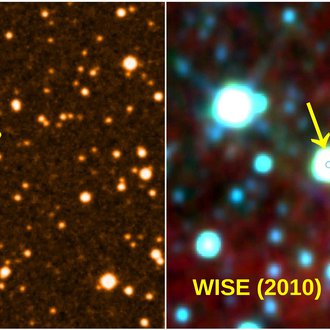
This red dwarf star (“Scholz's Star”) passed by the Sun 70,000 years ago in a distance of 10 light months. AIP researcher Ralf-Dieter Scholz discovered it in 2014.
Credit: AIP, SuperCOSMOS Sky Surveys, WISEThe Leibniz Institute for Astrophysics Potsdam (AIP) invites to the next Starry Night in Babelsberg on Thursday, October 19, starting at 7:15 pm with a public lecture of Dr. Ralf-Dieter Scholz about our "Cool neighboring stars". Please note that the lecture will be given in German.
Even though the stars in the sky seem to be standing still, they are moving rapidly through space. This applies to our home star, the Sun, as well. However, the fast movement of stars is not visible to the naked eye, because even the nearest celestial bodies are far away from us. They do not crash into each other, not even if their paths cross or if a star that is drifting by is passing our solar system. Surprisingly, we are not even close to knowing all our neighboring stars, as Ralf-Dieter Scholz will explain in his talk. The closest star, Proxima Centauri, has only been discovered about a hundred years ago. The search for further hidden red dwarf stars and the brown dwarfs, which are even harder to find but also surround our Sun in great numbers, goes on.
After the talk, we offer a tour over the AIP campus and – if the sight is clear – an observation with one of our historical reflecting telescopes.
We look forward to your visit!
Free entry, no previous registration necessary.
Location: AIP, An der Sternwarte 16, 14482 Potsdam
Images
This red dwarf star (“Scholz's Star”) passed by the Sun 70,000 years ago in a distance of 10 light months. AIP researcher Ralf-Dieter Scholz discovered it in 2014.
Big screen size [1000 x 501, 90 KB]
Original size [4656 x 2336, 970 KB]
